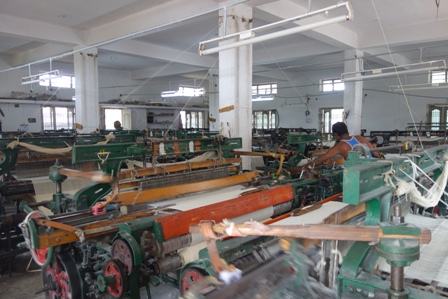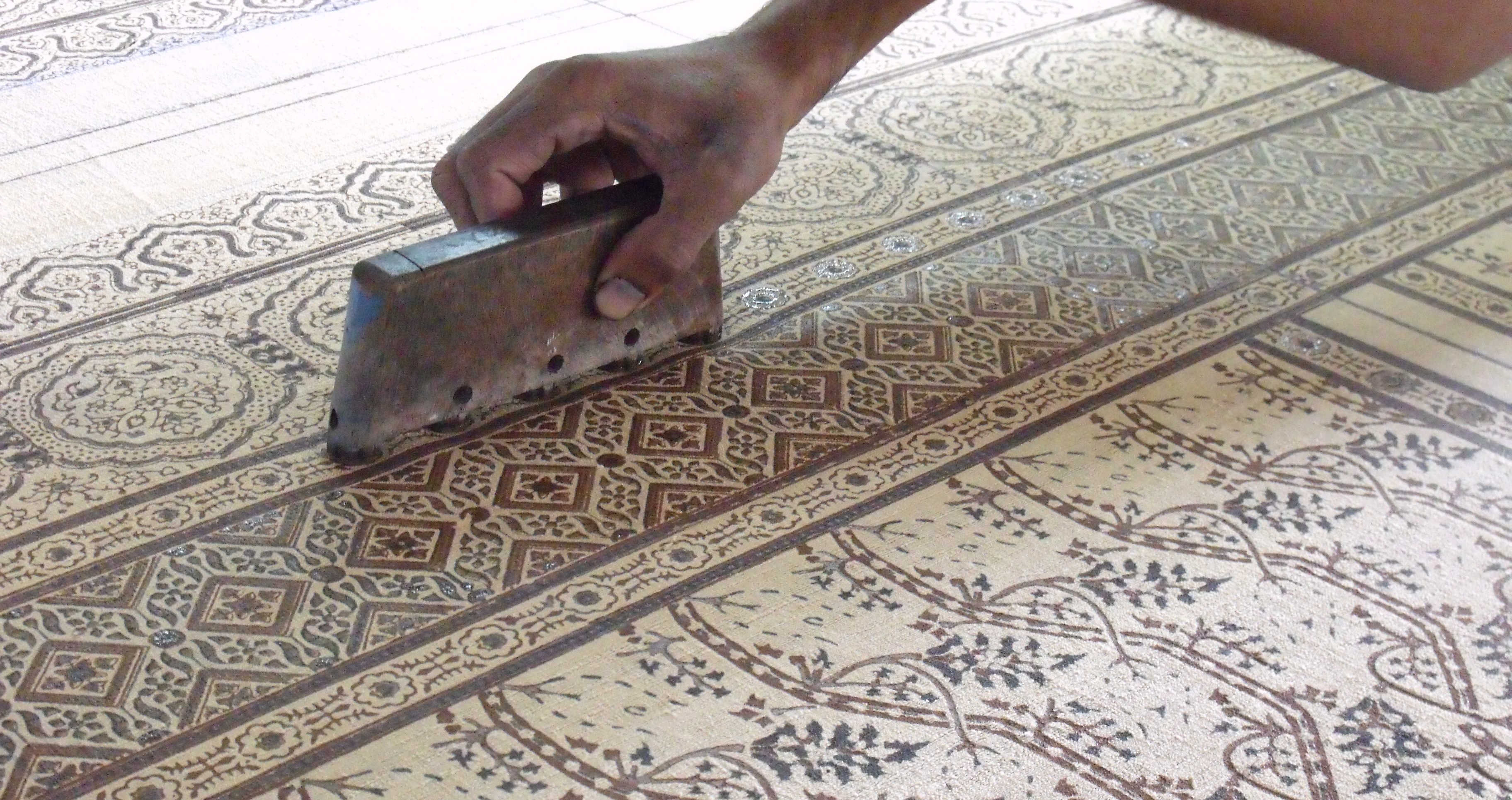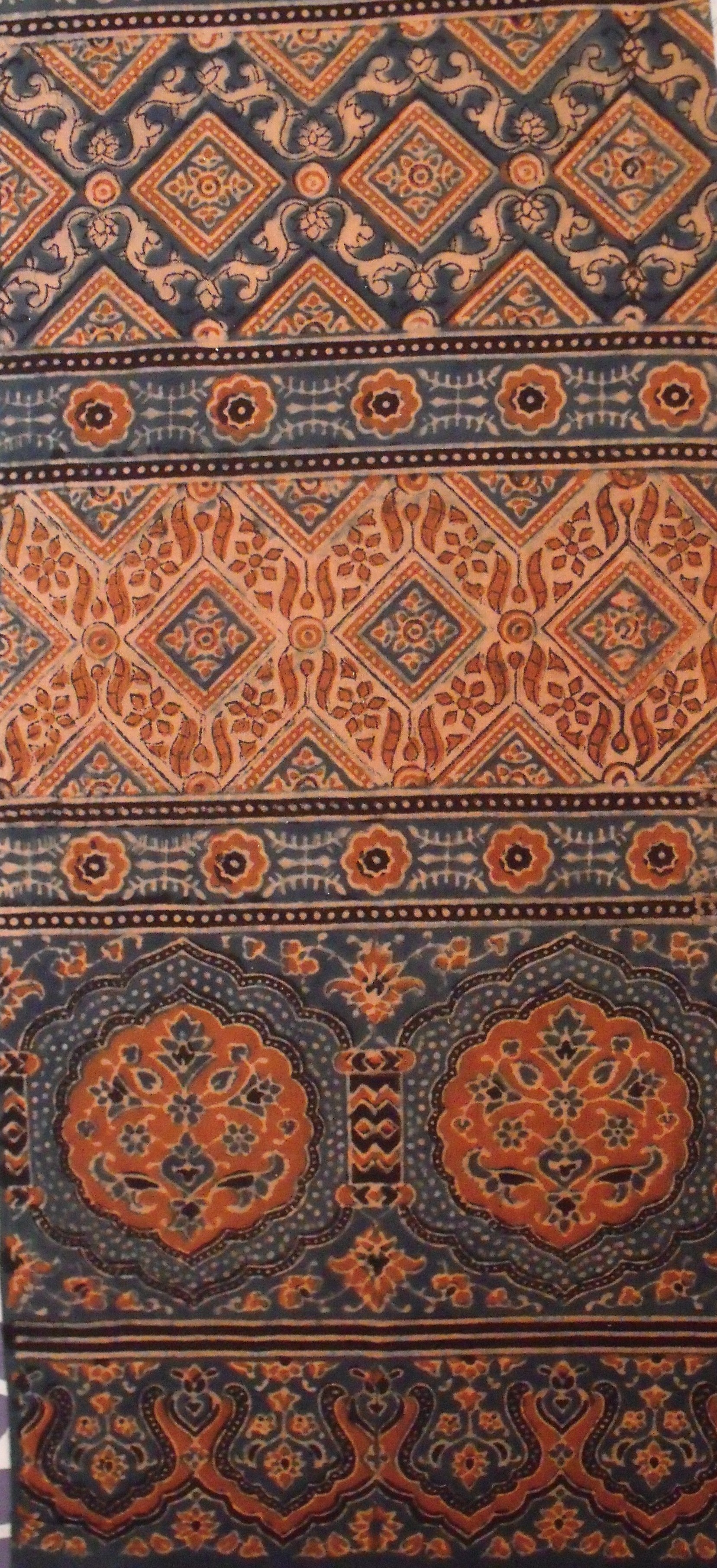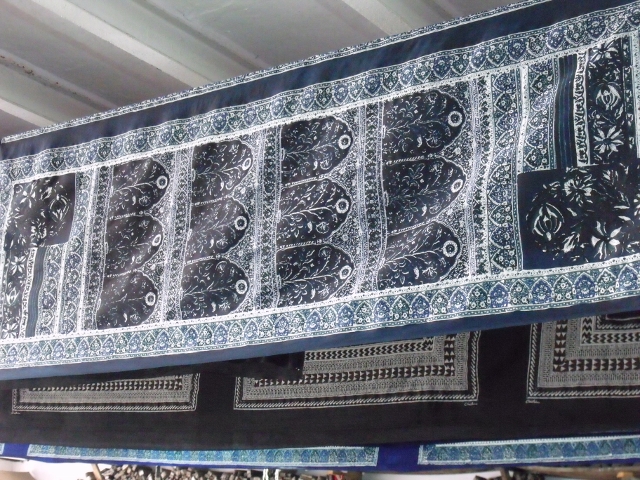Today is the last day of the 2015 Design batch of Somaiya Kala Vidya (SKV)’s exhibition at Artisans’ gallery, Mumbai.
I attended the final class – Presentation and Merchandising, as part of my PhD fieldwork. There were eleven students on the course, four weavers, four ajrakh artisans and three bandhani artisans. Before this class, students had attended Colour, Basic Design, Marketing, Concept and Communication and Finishing and Collection Development. Each class lasts two weeks and they are spread over a year. During the weeks in between each, the students develop work at home based on what they have learned in the previous class.
In Presentation and Merchandising, the students learned to display their collections effectively to show off the best of their work, and practiced orally presenting their design education journey to the rest of the class and the faculty. The audience then would ask questions and give feedback on the presentation and display. Each student’s skills in both improved significantly during the course, and on the last day of the course each student invited their family to come to watch and listen to the presentations.
As family members were also practising in the craft, they were able to give critical feedback based on their knowledge and experience. Weaver Ravji had developed tote bags with separate pockets that involved no pattern cutting or machine production, and produced no waste yarn. The excess yarns were braided into decorative straps. This sparked discussion as it was a new product, and the first time something of this sort had been made in the Kutch weaving tradition. His wife, also a weaver, had lots of questions to ask.

Similarly, ajrakh block printer Khalil had developed simple jackets using square pieces of printed fabric with two holes cut out for the arms. It worked as a sort of shawl-jacket, the corners hanging down the sides of the body. Khalil’s family and other ajrakh artisans in attendance weren’t completely convinced of this design. Whether this was because they weren’t used to seeing this type of garment worn, had little knowledge of the market it was aimed at, or they just had technical criticisms, I wasn’t sure (due to my lack of Hindi!), but ideas were shared such as printing on both sides as both sides could be seen, or adding a lining.
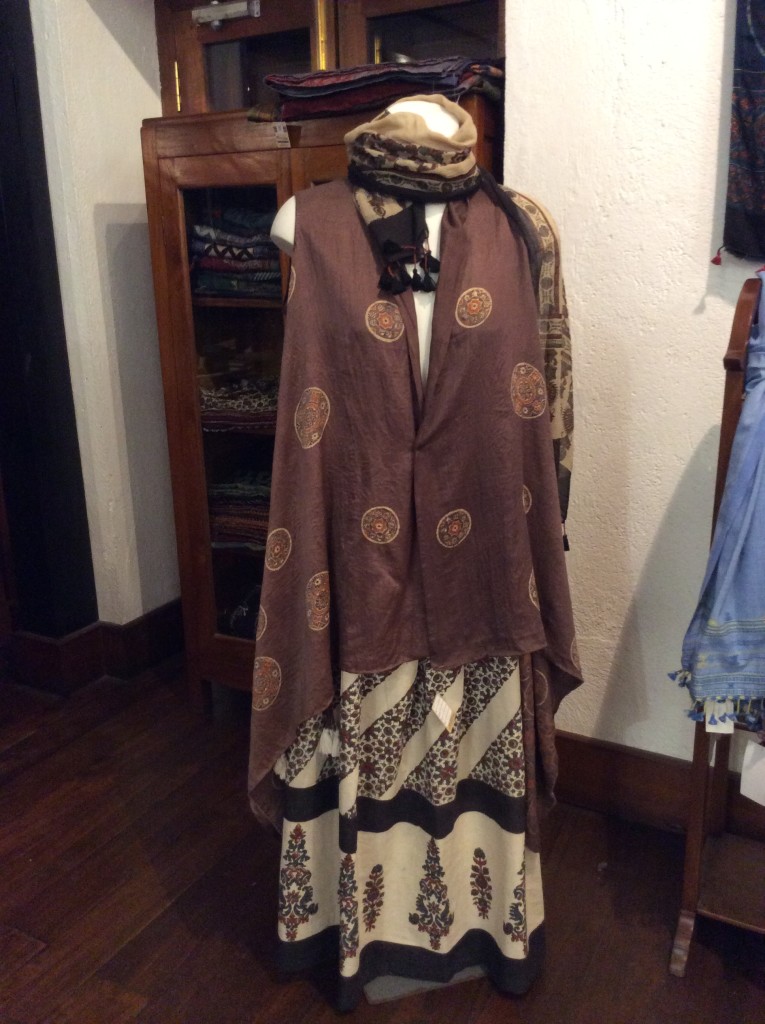
Both products worked as a concept, they just needed a little adapting.
At the end of the course was the jury. After all the practicing and preparing came the final weekend of presentations to a group of eminent professionals in the craft and design field. This included Rita Kumar, who is known for her high-end luxury fashion brand inspired by royalty, and is the author of the book ‘Costumes and Textiles of Royal India’; Anuradha Kumra, head buyer for Fab India, Geeta Ram, one of the directors of the Crafts Council and co-founder of Industree Crafts, and Reena Bhatia, design faculty member at MS University, Baroda.
The diverse jury was beneficial in giving effective feedback. The cross-section of fields they had come from made for an interesting variation of feedback. Anuradha quite clearly had her buying head on and was looking out for designs that would sell well at Fab India. Ritu Kumar took a similar approach and had the high fashion market in mind as she suggested looking at colour trend forecasts. However, Geeta and Rani took a less bias approach and were therefore able to give broader constructive critical feedback.

Anuradha was also not convinced by Khalil’s jacket and this knocked his confidence. However, he persevered and produced a few jackets for the Artisans’ exhibition. He has so far sold four and customers love their drape and style. The students have now to face the challenge of how to balance reaching the requirements of the market and creating what they like and enjoy making. Often the end-customer doesn’t know what they want until they see the product. And if it is a unique product, made with love by a creative and skilled artisan/designer, there will be a ready, albeit it perhaps niche, market for it.
In weaver Poonam’s presentation at Artisans’ gallery he said he used to just weave shawls and whatever price he got for them he would accept. While he learnt to weave at a young age and is an experienced weaver, he stopped weaving himself a few years ago, and since has just managed his team of six weavers. These weavers were surprised when he sat at the loom to weave samples for his homework during the SKV course, as they hadn’t realised he could actually weave. When I asked Poonam how the weavers took to using new materials and techniques, he said ‘they enjoyed working on new designs, it was something differentt and exciting for them’. He also realised how important it was to treat these weavers with respect so that they enjoyed the work. Poonam produced some beautiful shawls in tussar and wool based on the theme of the Sky for his final collections. He used stunning combinations of sky blues, teals and neutral colours.

Weaver Pravin’s theme was ‘Old is Evergreen’ and he took inspiration from patterns in architecture to create extra weft designs in the border and pallu of his shawls, stoles and saris. He used a rich colour palette of yellows, deep oranges and reds.
‘In the concept course I learned how to convert my thoughts into designs’.
Another interesting concept was the stitched join that appears in the traditional Kutchi Dhablo that Pravin had imitated using multi-coloured tie dye which created a focus point.



